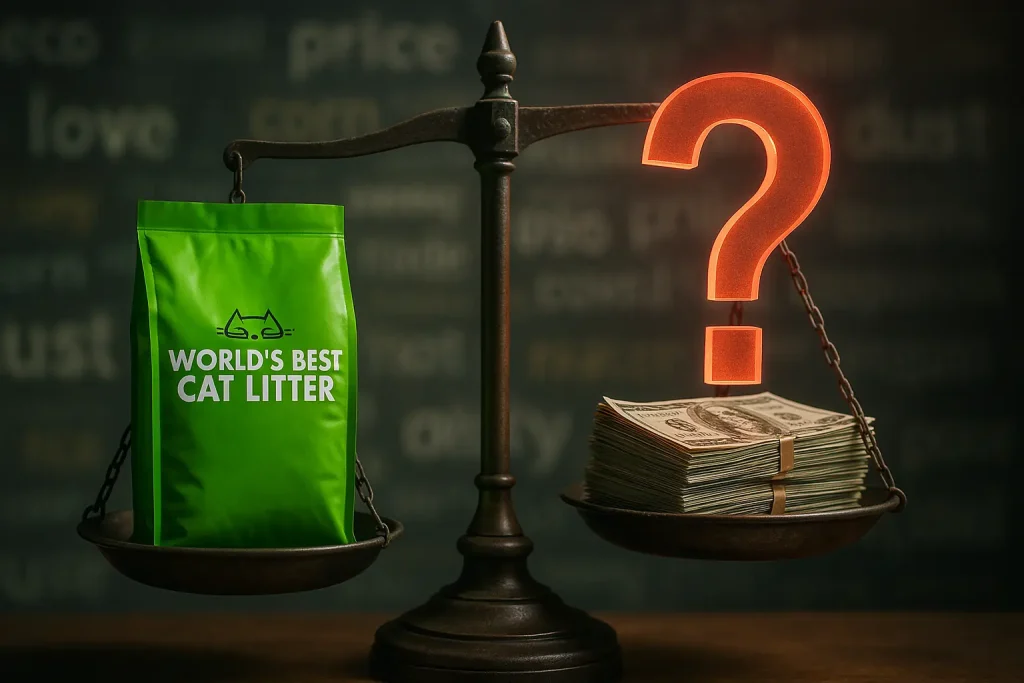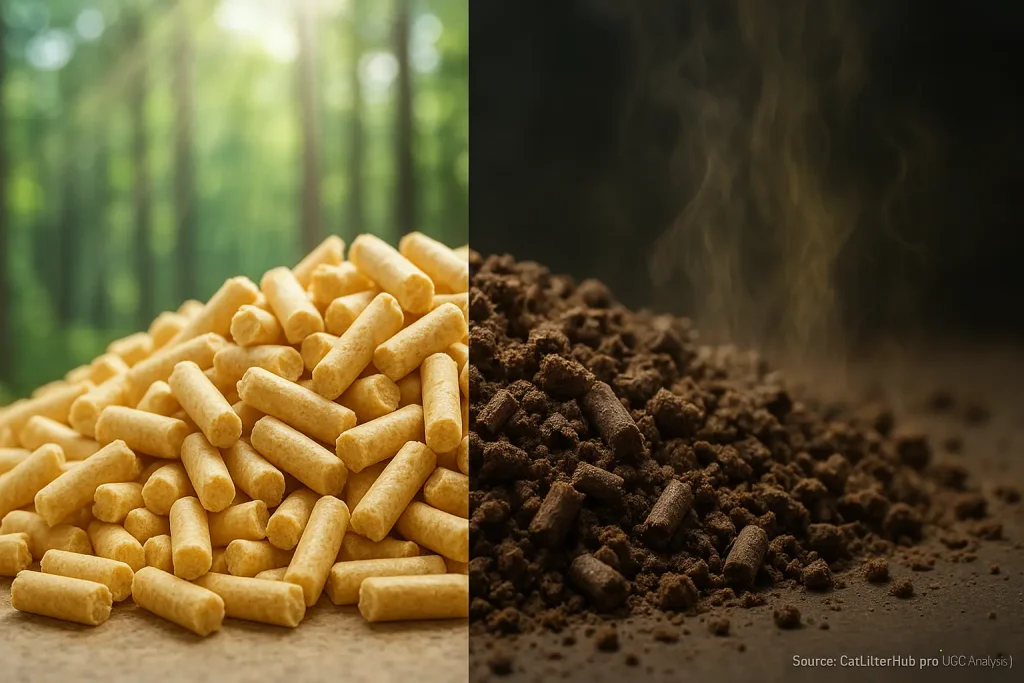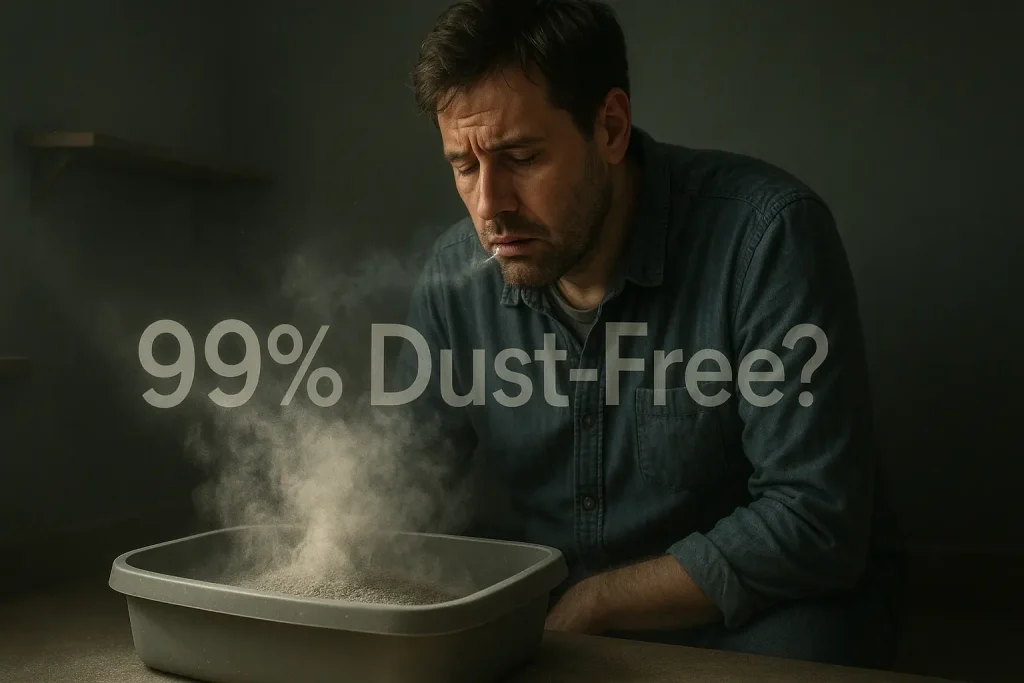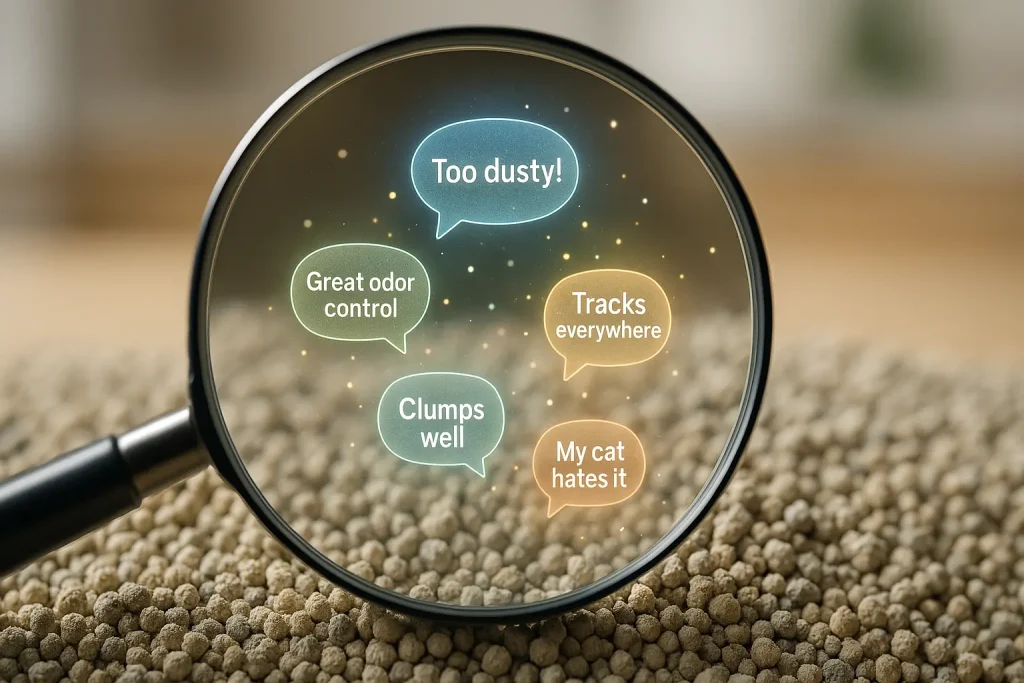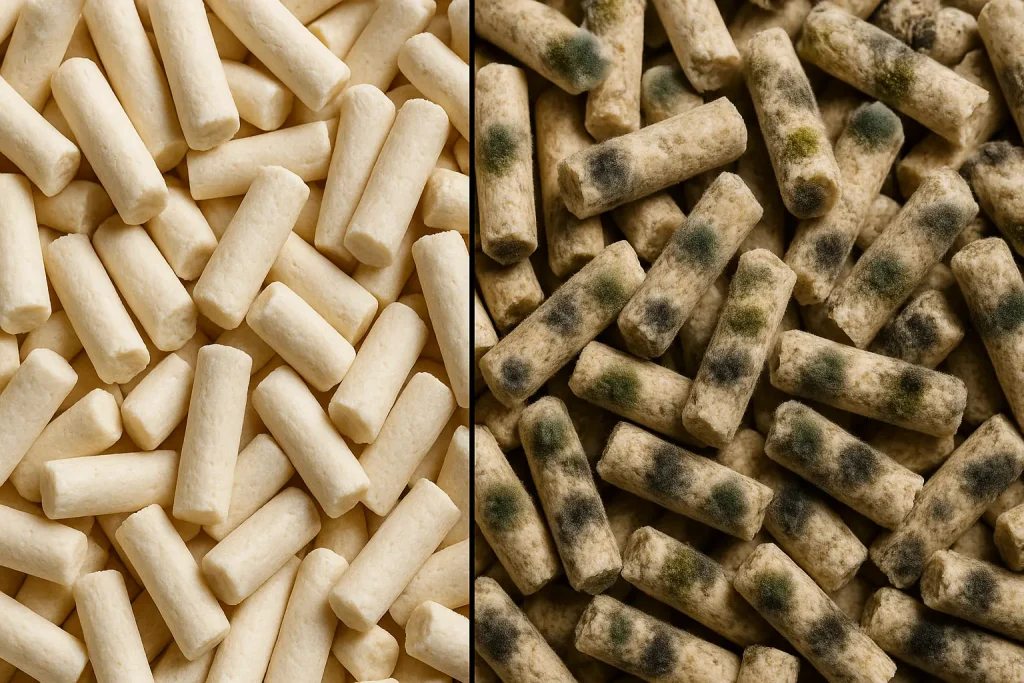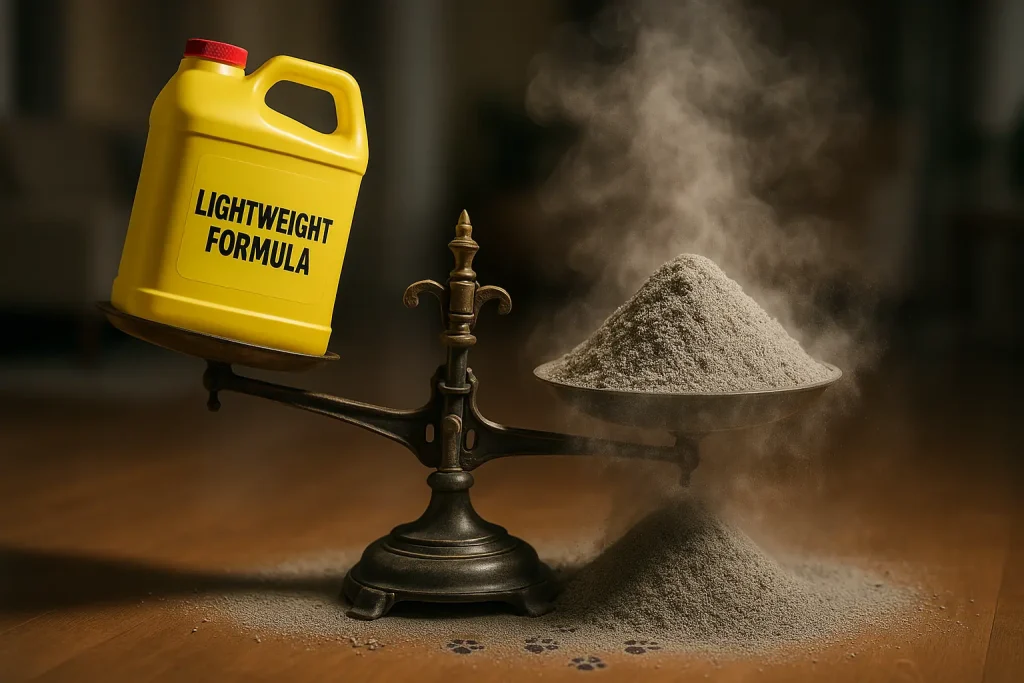The Allure of Stretching Litter Life: When Frugality Meets Feline Realities
Your wallet winces. That half-used litter bag stares back. Surely, it can last longer? Many cat owners share this exact thought. Our analysis of countless online discussions highlights this universal desire to stretch the litter budget. But when does smart saving tip into risky business for your cat? A critical question.
Skyrocketing cat litter prices fuel this quest for economy. Environmental worries about frequent disposal also play a part for some. So, what happens? Owners get creative. Really creative. We've sifted through forum threads, uncovering user experiments and 'don't tell the vet' litter stretching tactics shared within the community.
This is not a 'how-to' for jeopardizing feline health. Absolutely not. Cat Litter Hub explores what methods users actually attempt. We detail their reported outcomes, both good and bad. Crucially, our investigation focuses on the often-unmentioned risks involved. Some user ingenuity, driven by frugality, is truly eyebrow-raising. Our advice? Extreme caution is paramount.
"Advanced" Sifting: The Fine Line Between Genius and Grime
Think your daily scooping is thorough? Some cat owners take sifting to an entirely different plane. Users report employing elaborate, multi-stage sifting methods. Their goal is maximizing litter reclamation. This often involves sifting the entire box contents, sometimes daily, through a series of screens with varying mesh sizes.
Imagine this scenario, drawn from numerous owner accounts. An individual might spend fifteen to twenty minutes daily with a homemade or adapted multi-sieve system. They carefully pour. They shake. They separate. The aim? To rescue a few seemingly usable litter pellets from the waste. Their laundry room or balcony can resemble a small, dusty quarry. The underlying belief some express is that this intensive process saves significant money on litter over time.
Let's look at the reality our analysis of user feedback reveals. The perceived benefit is stretching litter life. However, the practical downsides reported are considerable. Time investment is substantial for most households. Agitating the litter so thoroughly often dramatically increases airborne dust. This raises concerns about respiratory exposure for both cats and humans. Furthermore, the hygiene of reintroducing ultra-fine, potentially soiled particles back into the "clean" litter is questionable. The few granules saved might not offset these factors.
Are these extreme sifting habits more common with certain litter types? User discussions suggest very fine-grained clumping litters, or expensive litters, sometimes tempt owners into these super-saving attempts. The ultimate question many users eventually ask themselves: Is this microscopic saving worth the macroscopic effort, mess, and potential hygiene trade-offs? For the vast majority, the consensus becomes a firm "no" as the novelty wears off and practicality takes precedence.
Drying & Reusing Litter: User Experiments Gone Wrong (and Right?)
Some cat owners try drying soiled litter. They attempt to reuse it. This idea surfaces in many online user discussions. Clay litters are common targets for these user experiments. Silica gel litter also gets mentioned by users attempting reuse.
User experiences shared online paint a vivid, often troubling, picture. One recurring scenario involves sun-drying used clay litter. Owners spread the soiled litter on tarps, hoping for renewal. The reported reality? Often a smelly, fly-attracting failure. Bacteria, users discover, likely remain despite the sun.
Serious hygiene concerns dominate user-reported attempts at litter reuse. Urine and feces inherently contain harmful bacteria. This is a simple biological fact. Drying methods described by users, like sun exposure, rarely achieve true sterilization of used litter. Even oven-baking, a dangerous practice some admit, likely fails to eliminate all potent pathogens. You risk reintroducing these unseen microbes directly into your home environment.
That persistent litter box odor often worsens with reused litter, user accounts confirm. The strong ammonia smell clearly signals bacteria feasting on urine residue. Drying might reduce moisture, but shared experiences show it rarely removes microscopic threats or ingrained smells. While some users try drying silica gel, focusing on moisture, hygiene risks undeniably persist. The overwhelming community voice and our analysis agree: this 'hack' risks cat health and belongs in the 'bad ideas' folder.
The Additive Alchemists: Strange Brews Users Mix In (And Why You Shouldn't)
Beyond familiar baking soda, some cat owners become 'additive alchemists'. Their litter box transforms. It becomes a strange science experiment. These well-meaning individuals add various household items. They seek enhanced litter. This approach, our UGC analysis reveals, is fraught with peril.
Our UGC analysis uncovers startling experiments. Users report mixing in coffee grounds, perhaps for odor. Different owners try flour, maybe for clumping. Others even add potpourri. Please, do not. Dish soap also appears in these user reports. Its purpose remains a mystery.
The core problem? Common household items present irritation risks. Some are even toxic to cats. Cats have sensitive systems. Their grooming habits mean ingestion of litter box contents. The unspoken truth from user experiences is that even 'natural' kitchen staples can cause harm. Imagine cats licking flour-caked paws. Or inhaling fine coffee dust. These are real dangers.
Commercial litters are formulated for safety. They are designed for performance. Your cat deserves this specific consideration. Is your current litter failing? The answer is not a kitchen raid. The real solution means choosing a different, professionally made litter.
The Verdict: When Does Frugality Become a Feline Health Hazard?
So, what is the bottom line from our analysis of extreme litter hacks? For most cat owners, the documented risks and required effort vastly outweigh minuscule savings. Litter fulfills a vital feline need. It provides a clean, safe, and inviting toilet for your cherished companion.
Your cat cannot verbally communicate discomfort from improperly reused litter. They may experience wrong textures or offensive odors. Sore paws are another hidden problem many users unknowingly cause. Cats often suffer silently. Alternatively, they begin avoiding the litter box. This avoidance creates significant, stressful household issues for you.
True frugality in pet care prioritizes feline health and overall well-being. Investing in suitable, quality litter and maintaining a meticulously clean box is an act of love. This is not an area for dangerous, risky shortcuts. When doubt arises, always choose safety. Hygiene must supersede pinching pennies on this absolutely crucial cat care item.
Smarter Savings: Practical, Cat-Safe Ways to Make Litter Last (Without the Mad Science)
Okay, those extreme litter experiments are definitely out. You are not stuck overspending on cat litter. Many sensible, cat-approved ways exist to manage costs. These methods stretch your litter budget effectively. Real savings are possible.
What do savvy cat owners often share? Litter economy frequently hinges on two simple principles. First, select the litter best suited to your household and your cat. Second, use that chosen litter with smart daily practices. These are the boring but brilliant basics.
- Diligent scooping is fundamental. Remove waste at least once or twice daily. This action is the top way users keep litter fresher, longer. Less odor too.
- Maintain optimal litter depth. Most clumping litters need two to three inches for best performance. Always check manufacturer guidelines for your specific brand. Too little or too much litter causes unnecessary waste.
- Consider a high-quality clumping litter. Superior clumps remove waste more efficiently, taking less clean litter with them. This often means fewer full-box changes. Many owners find this approach more economical over time.
- Look for larger bags or bulk purchase deals if storage allows. The per-pound cost frequently decreases with increased volume. You will need adequate, dry storage space for this strategy.
- Use an effective litter mat outside the box. Good mats catch scattered granules from your cat's paws. Some clean, tracked-out litter might be carefully returned to the box. This depends entirely on your litter type and maintaining absolute cleanliness.
- Ensure your litter box is an appropriate size for your cat. A comfortable box encourages proper use by your feline friend. Less waste often results when cats feel secure and uncramped.
Smart litter management is not about complicated hacks. Consistent good habits form the true foundation. Informed choices make a tangible difference. Your cat will appreciate the clean environment. Your wallet will notice the savings.

